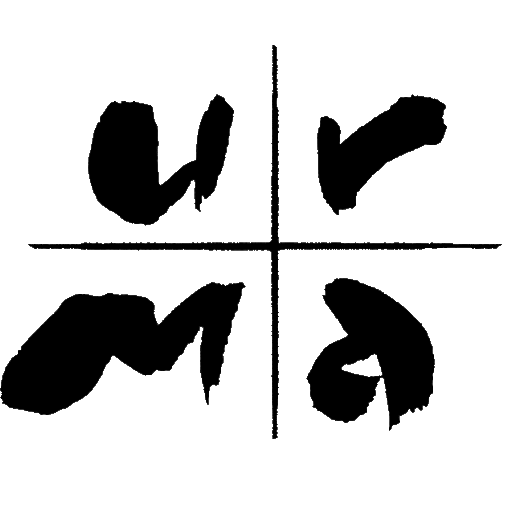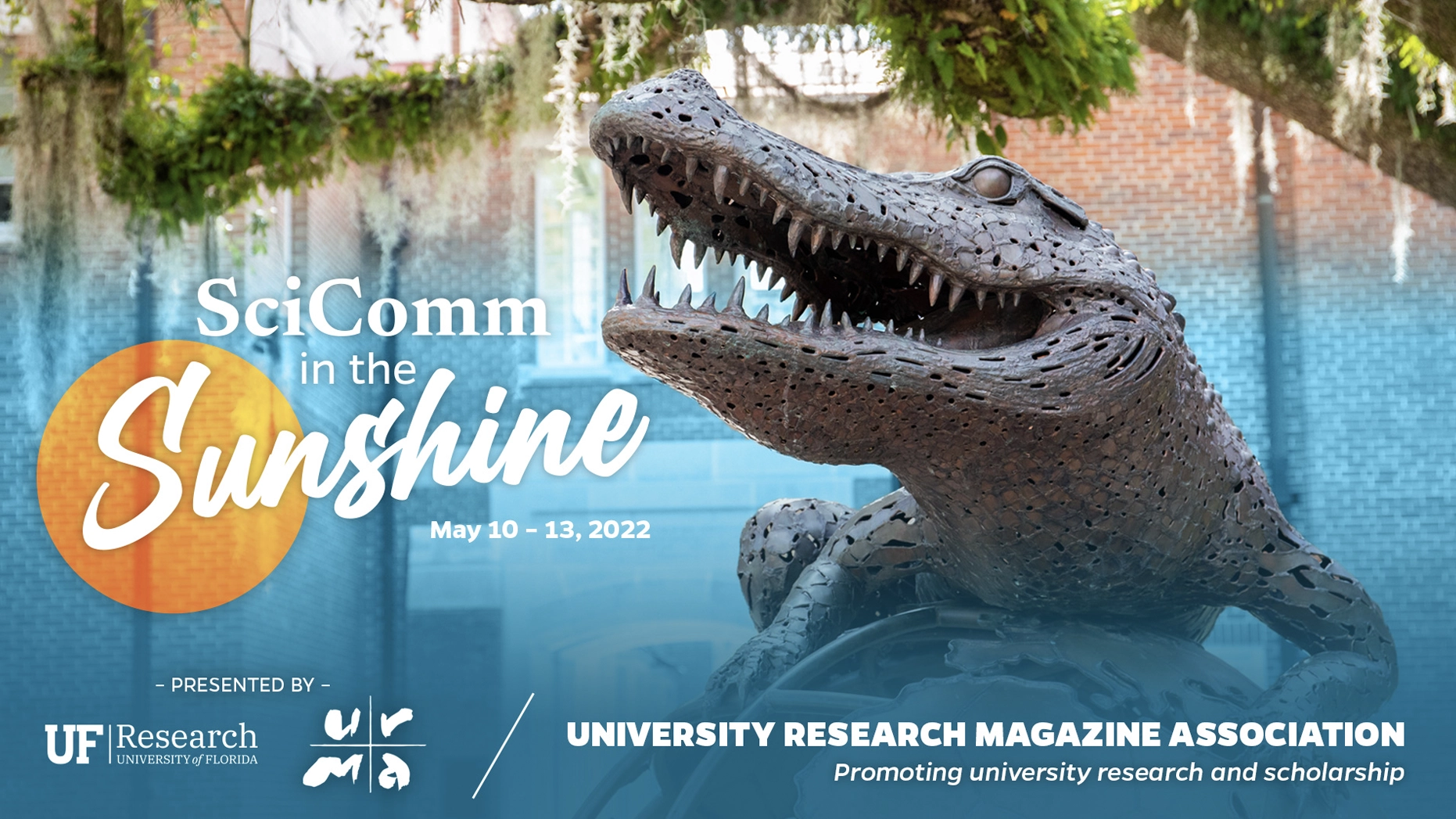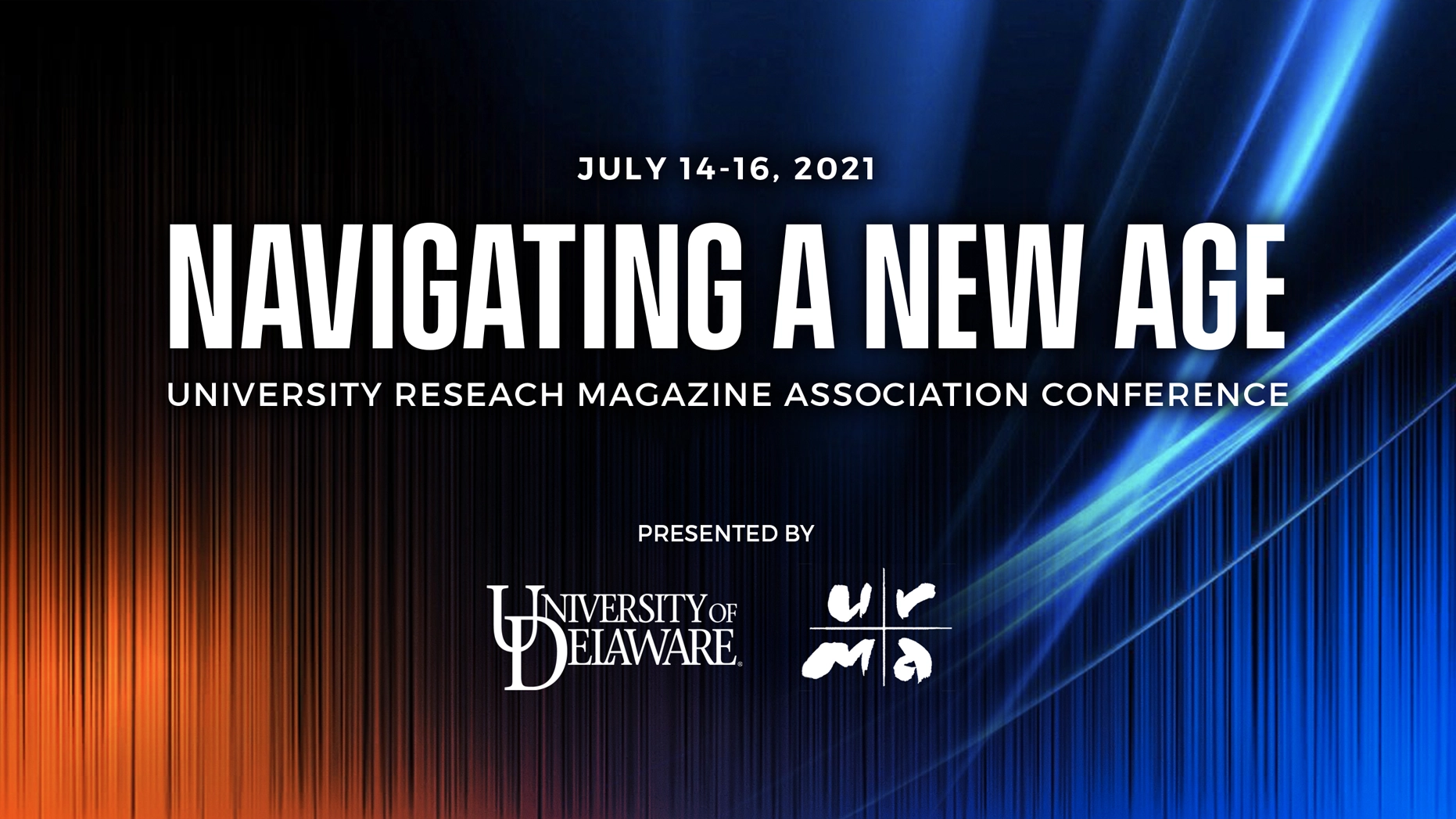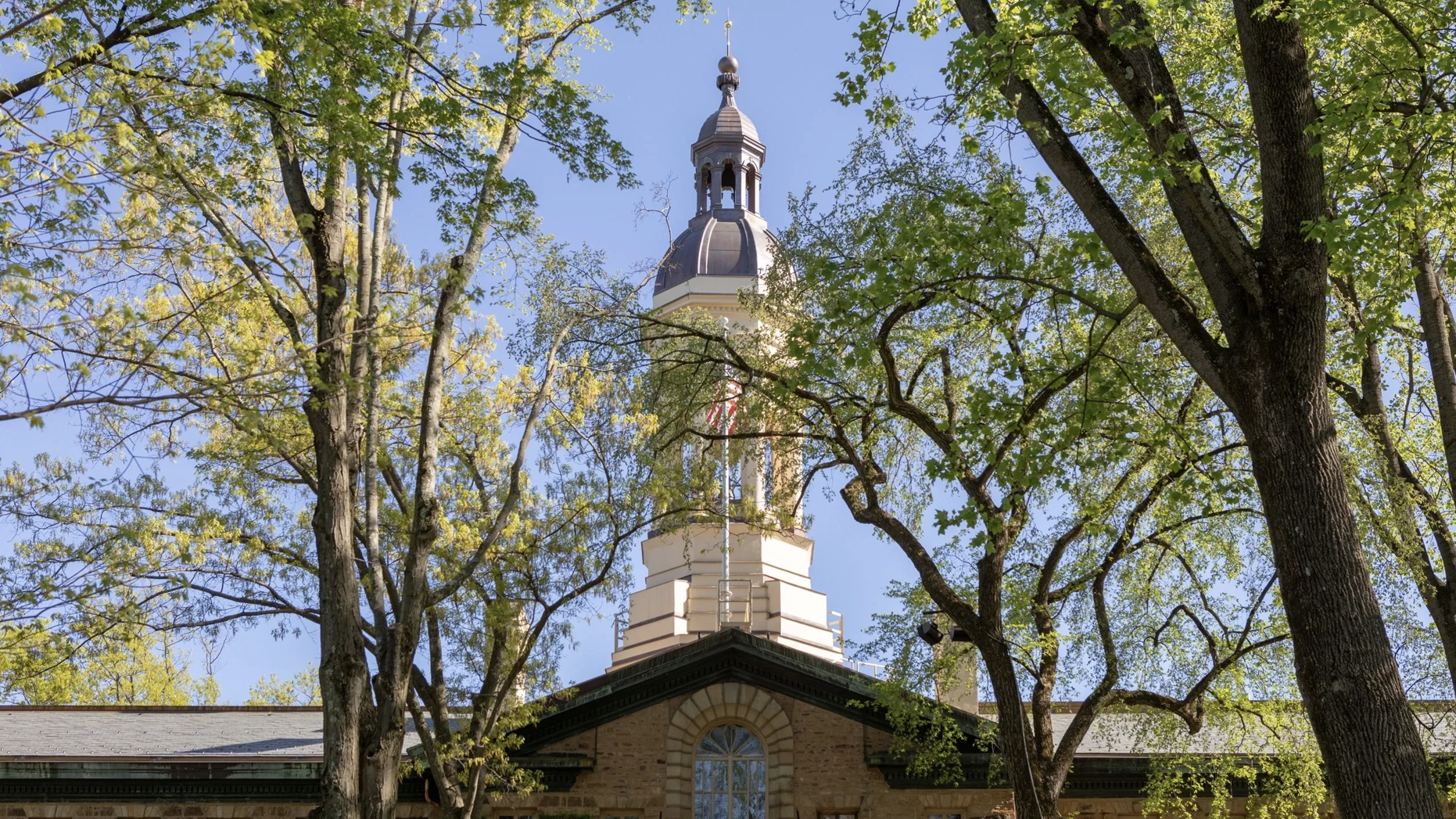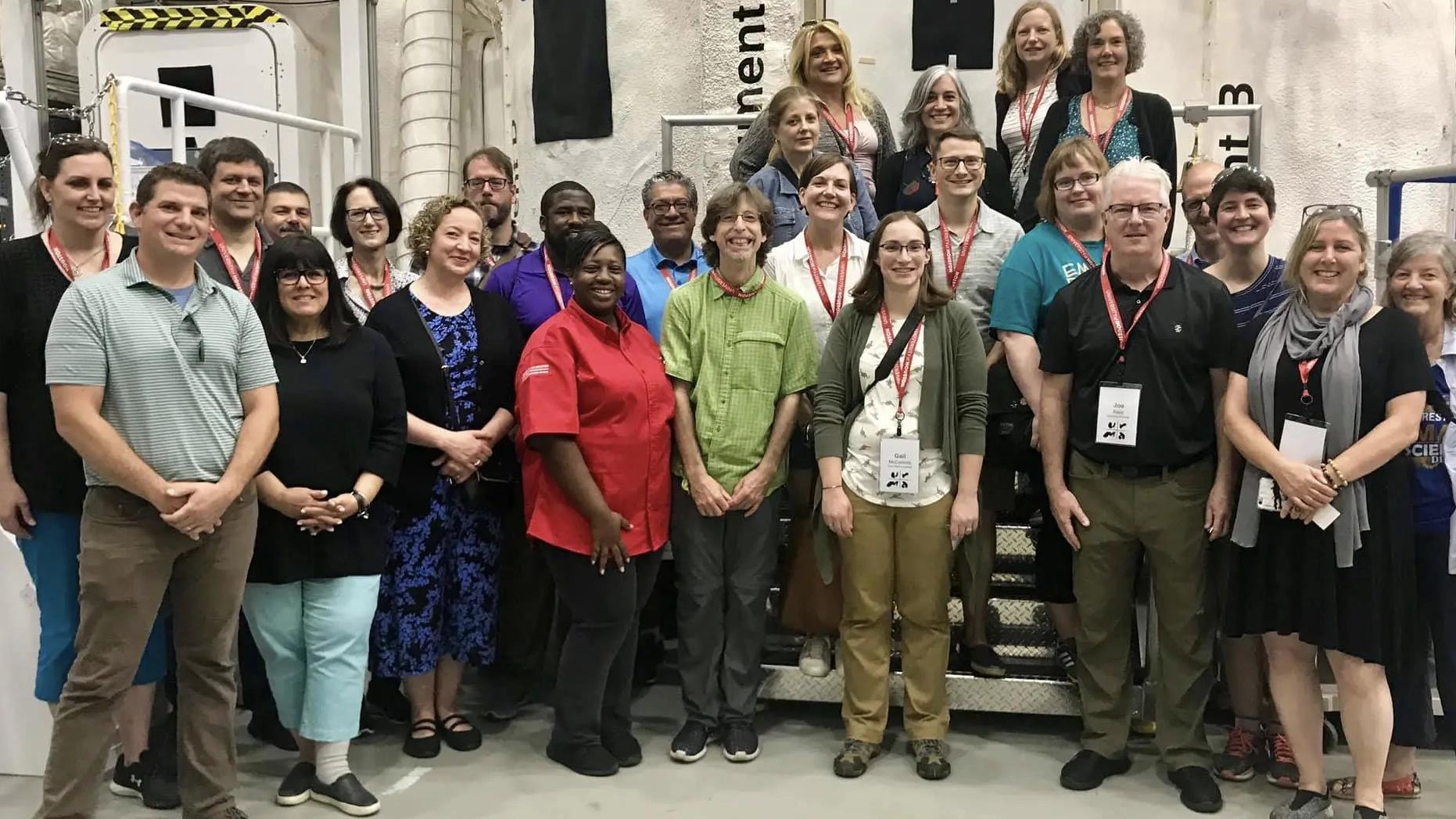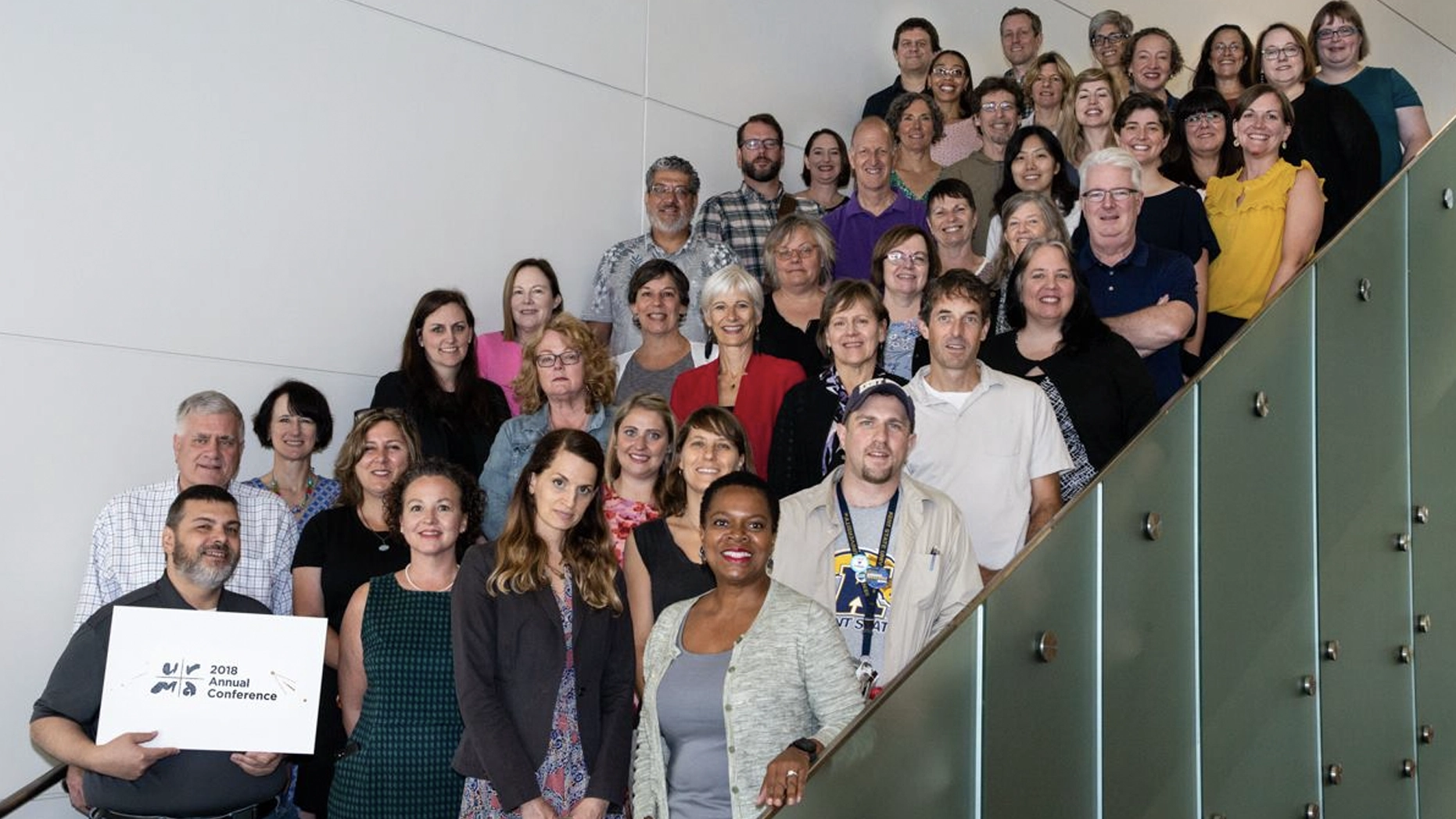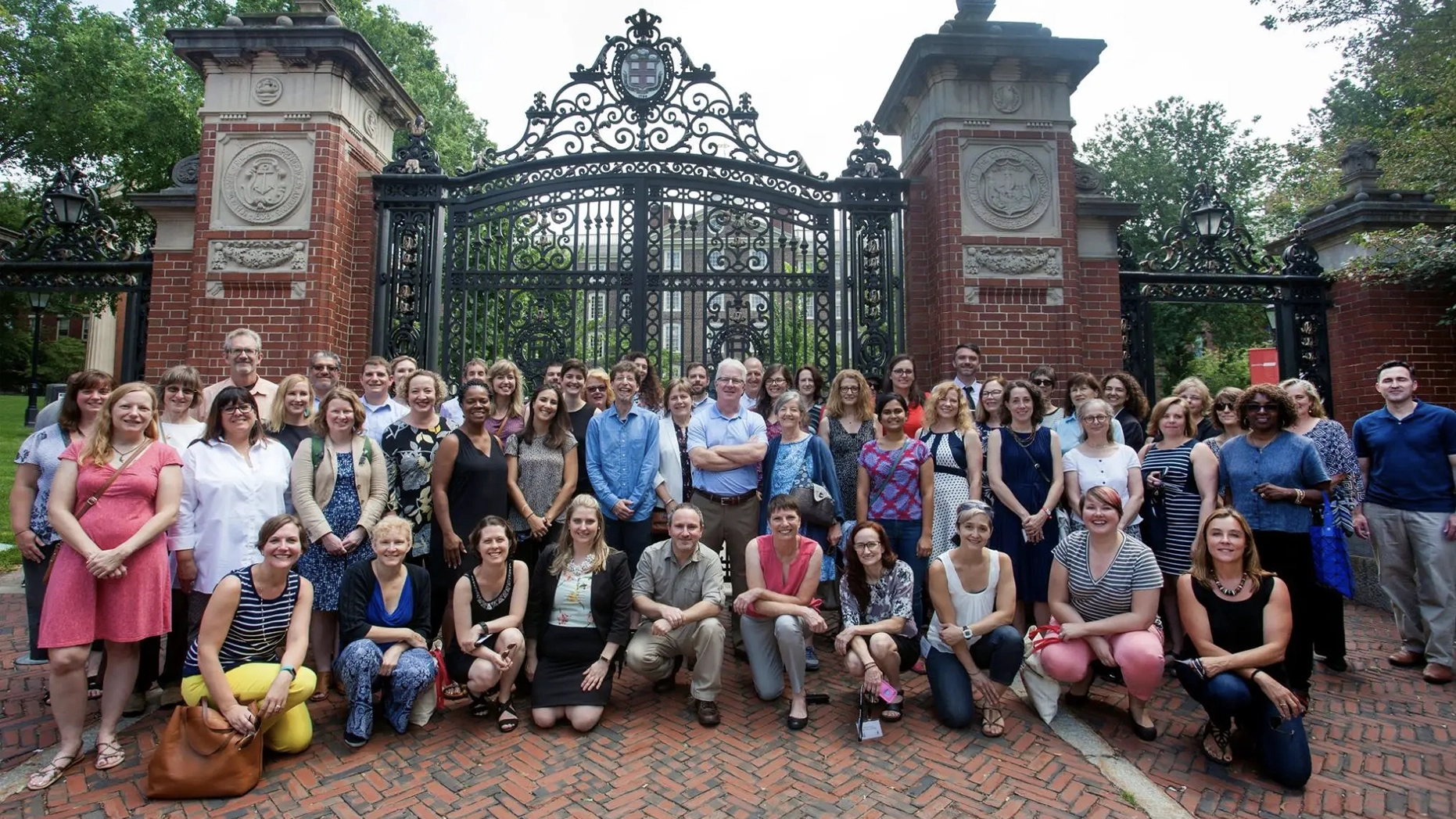The URMA Experience
At URMA’s annual conference, you’ll connect with colleagues from universities and institutions who communicate about research through online and print magazines, articles, social media, videos, podcasts and more. Our conference features practitioners in realms such as journalism, design, photography, multimedia and other areas relevant to telling the stories of research. If you communicate about your institution’s research, URMA’s annual conference is for you.

 URMA Annual Conference
URMA Annual Conference
At URMA’s annual conference, you’ll connect with colleagues from universities and institutions who communicate about research through online and print magazines, articles, social media, videos, podcasts and more. Our conference features practitioners in realms such as journalism, design, photography, multimedia and other areas relevant to telling the stories of research. If you communicate about your institution’s research, URMA’s annual conference is for you.
Past Conferences
 URMA Nick Houtman Travel Grant
URMA Nick Houtman Travel Grant
This program provides up to $1,000 to cover the costs of attending the URMA annual conference. It is named after Nick Houtman, former URMA treasurer widely known for his professionalism and generous spirit. Prior to his retirement in 2018, Nick was director of research communications at Oregon State University.
Eligibility: Priority will be given to URMA members who have not attended the annual conference. Members who have received a travel grant in the past are not eligible.
Description: Eligible costs include the (1) conference registration fee, (2) transportation to/from the conference, and (3) lodging.
Requirements: To receive reimbursement, travel grant recipients must submit the following within two weeks after the conference:
- A report (300 – 1,000 words) on a conference presentation/session for publication on the URMA website and for potential presentation at URMA Live.
- A personal quote (100 words max.) about the benefit/impact of the conference on the recipient’s professional development, suitable for use as a testimonial on the URMA website.
- Receipts within two weeks of the conference.
To apply: Please use the online form.
Read how this experience has influenced a few of our recipients below:
2023 JEN HUMPHREY, UNIVERSITY OF KANSAS
2023 Jen Humphrey, University of Kansas
2023 University of Pennsylvania
The 2023 URMA conference was the best learning experience I could ask for. I picked up tips and resources on managing social media better with limited resources, learned new ways of working with journalists in alternative contexts such as Substack, gained an inside perspective on trends in research communication across the globe, and met a great mentor with years of experience with research promotion and publications. I enjoyed seeing how other universities approach complex issues such as animal model research, how they transitioned to online-only publications, how they trained researchers on science communication, and how to navigate your job when research news takes off extraordinarily in the media. The size was perfect for meeting new people and forming connections with a group of individuals who face the same research communications and responsibilities that I do. It was like discovering one’s long-lost community! I’m so glad I had the opportunity to participate for the first time this year, and I will be back.
2023 CHRISTIE KENNEDY, UNIVERSITY OF TENNESSEE, KNOXVILLE
2023 Christie Kennedy, University of Tennessee, Knoxville
2023 University of Pennsylvania
The URMA conference in 2023 was wonderful, the presentations were thoughtfully chosen and every single one was directly relevant to my role and the goals of my team. It was restorative and exciting to be with a close-knit group of people who all do the same work I do — research and science communications is a subset of regular higher ed C&M, and this conference is the only one I’ve experienced that catered exactly to my role and the issues, challenges, and opportunities I see. 10/10; will come again!
2022 BETH POTIER, UNIVERSITY OF NEW HAMPSHIRE
Beth Potier, University of New Hampshire
2022 Conference at University of Florida
To Come
2017 AMANDA SOLLIDAY, SLAC NATIONAL ACCELERATOR LABORATORY
Amanda Solliday, SLAC National Accelerator Laboratory
2017 Conference at Brown University
This was my first URMA conference, and I appreciate how welcoming the group is to newcomers. Beginning with the first evening’s impromptu dinner, I was struck by how generous the other conference participants were with their time and professional advice.
The pre-conference field trip to Woods Hole Oceanographic Institute did not disappoint. It was a
gorgeous place to spend the day, and I could also see many parallels between this historic, complex lab and my own employer, SLAC National Accelerator Laboratory.
During the lunchtime discussion, it was helpful to hear how others best gather information and prioritize stories when there are so many research groups within an institution and possible angles. It’s helpful to hear what others have tried and what has succeeded or failed. The Woods Hole science communicators discussed how to demonstrate your communications expertise to scientists and how to encourage researchers to share their own work and feel confident doing it. A couple ideas stood out to me—display your communications team’s credentials on a brochure website to share with others in your organization and create a workshop for scientists to learn research communication, and produce a joint publication such as a magazine as the “final” for the course.
Providence is an exceptional place to think about the deep history of scientific discovery and the longstanding benefits of science. At the Ladd Observatory, I learned that cities once relied on astronomers to ensure that accurate timekeeping. The scientists would track the stars at Ladd as they passed through five slits. It was a simple but critical task for communities. This same humbling thought about the history and importance of science resurfaced several times throughout the conference, in particular during the talk by Brown University biology professor Ken Miller. (He authored my high school biology textbook!) His review of science skepticism in America’s history gave me a new perspective on the current political climate. As Miller said, often views towards science are “not a matter of facts, but a matter of identity.” Our goal as science communicators should not simply be inundating others with facts, but helping others connect in a meaningful way with science. Waiting to board the bus at Woods Hole Oceanographic Institute.
I also found all conversations about multimedia valuable, including the Facebook Live demo and tips from the Film Festival participants. For me, the most memorable part of the conference was the tour of the Rhode Island School of Design’s Nature Lab. The substantial collection of biological specimens inspired me, a clumsy, novice artist, to take time to explore visual details and draw insects as I viewed them under a microscope. In my work, I will continue to think more about how I can pair visuals with words in a meaningful way and pay attention to unusual sources of inspiration. The book club proved to be a nice supplement to the conference sessions, and reminded me that I rarely take the opportunity to discuss literature with peers. When Breath Becomes Air by Paul Kalanithi showed how powerful science can be when it’s personal and an author is willing to share that connection with others.
By the end of the conference, I felt refreshed and reenergized to share the science of my lab. During the flight home, I couldn’t quiet my mind until I had jotted down all the new possibilities I could see for my own work. (And although this isn’t exactly related to science communication, I’d like to point out that Rhode Island could be the best-kept travel secret in our country. I plan to return with my family for a WaterFire festival!) Kudos to Noel Rubinton, Brown University and each of the conference organizers. Your thoughtfulness and attention to detail is inspiring. And thank you for the support through the Nick Houtman Travel Grant program.
Amanda Solliday attended the 2017 URMA Conference.
2017 KELLY HOCHBEIN, LEHIGH UNIVERSITY
Kelly Hochbein, Lehigh University
2017 Conference at Brown University
I left URMA 2017 feeling like I was wearing a superhero cape of sorts, one emblazoned with a shiny “RC” for “research communicator,” perhaps intertwined with a graphic of a mighty pen (or maybe a keyboard). I came to Providence to learn, but I left with a new sense of mission. I’m relatively new to the world of research communications. As I’m based in Lehigh’s central communications office, I have a good sense of messaging, brand, marketing—all the things you think about when promoting your university. But I hadn’t thought much about my research communication beyond its impact on Lehigh’s reputation.
This URMA conference, my first, had me ready to write and edit with a larger purpose: to convey and defend the importance of research in general. The Wednesday morning panel and talk and [Brown University Vice President for Communications] Cass Cliatt’s inspiring welcome at the opening reception got me thinking about my role in a much bigger sense.
At Lehigh we already work with faculty and graduate students on how they can best communicate their research, but the importance of this was magnified by Geoffrey Supran, Megan Ranney and Timmons Roberts’ discussion about research communication and how to contribute facts to the narrative about science in America today. Now I want to do more. Ken Miller’s point about cultural cognition resonated with me as well: “Winning people over to science isn’t a matter of fact,” he said. “It’s a matter of identity.” Using human stories to explain science seems more important than ever, and that will guide the way I move forward as a writer and editor.
The panel on data use was compelling. I particularly enjoyed hearing about the work of RISD’s Nature Lab, which I had the great fortune of touring as part of Thursday’s program. The tour of the RISD Museum was fascinating, as was the discussion about how they conduct research there (and particularly the conversation about the ethics of studying mummies). Plenty of food for thought. I enjoyed hearing from David Corcoran from Undark and learning about his process for publishing stories. The fact‐checking portion had me thinking about what more we can do with our magazine. I particularly appreciated the question he asks when interviewing book authors: “Is there a story you left out that you’d like to tell?” I plan to use that one myself! Meera Subramanian’s talk on narrative writing inspired me to step up my writing game and “aim to enchant.”
The firehose sessions were chock full of great ideas. Now I’m hoping to implement a research photo contest at Lehigh, and learning about animated video was valuable as we’ve been discussing trying to produce one for a while now. The idea of a digital campaign is really interesting to me as well. It’s nice to know that there are colleagues I can now contact with questions about these initiatives.
I came to URMA 2017 hoping to learn best practices, match faces to listserv names, build relationships, and just soak it all in. As a newbie watching a bit timidly from afar, I’d gathered from reading the URMA listserv messages that I was about to encounter a vast amount of experience and knowledge. This was true. The presentations, casual conversations over meals and walks to and from Brown, the firehose and nuts and bolts sessions, and the URMA survey discussion all provided a wealth of information, things to consider and a better sense of the larger world of research communications. But it was the passion and excitement and the sense of camaraderie that struck me most.
URMAns are a friendly and brilliant bunch, and it was great to know that I’m not alone in some of the challenges I face in my work. I left Providence with a renewed sense of determination and purpose. A week after the conference’s closing, my head is swimming with ideas, inspiration, and a determination to do so much more in my role here at Lehigh. URMA 2017 was the most useful and interesting (and downright fun) conference I’ve ever attended. I hope to make it to Tennessee next year. Many, many thanks to Noel Rubinton, our other hosts at Brown and the URMA Board for their hard work.
2016 KRISTEN COYNE, NATIONAL HIGH MAGNETIC FIELD LABORATORY
What I Learned at the URMA Conference
2016 Conference at ….
I gleaned a great deal of information and inspiration from the URMA 2016 Conference, from Sean Zielinski’s overview of the Harley-Davidson brand to the panel discussion on LIGO’s black hole discovery.
For starters, it was a genuine thrill to plug into a community of peers who are as excited and nerdy about science communication, writing and editing as I am. That in and of itself was worth the price of admission, and I enjoyed dozens of conversations with people from across the country … and England! … on topics related to research magazines and science communication. I feel I now have access to a smart network of people with a passion for their work, and that is priceless.
I also took a lot from the content of the conference. Particularly useful to me were the design panel, “Science Communication through Collaboration” and “Announcing LIGO’s Black Hole Discovery.” The range of content and formats — take-away tips, inspirational stories, informal discussions and in-depth looks at specific topics – made it easier to digest and process all the material.
The size of the conference made it easy for participants to connect with and learn from one another, and made it much easier to follow up with speakers and panelists for one-on-one discussions after presentations. The timing of the conference was very propitious for me, because we are developing a new research magazine at The National MagLab. In addition to receiving a lot of relevant information that will aid in that process, I was able to button-hole designers, editors and writers, show them what we’re working on, and get invaluable feedback that is sure to make our end product better.
Last but not least, I had a lot of fun! The extracurricular activities, both official and impromptu, helped to keep the group’s energy up, showcase a very cool city, and provide more time for URMAns to get to know each other. Thanks for a terrific conference … the best I’ve ever attended!
